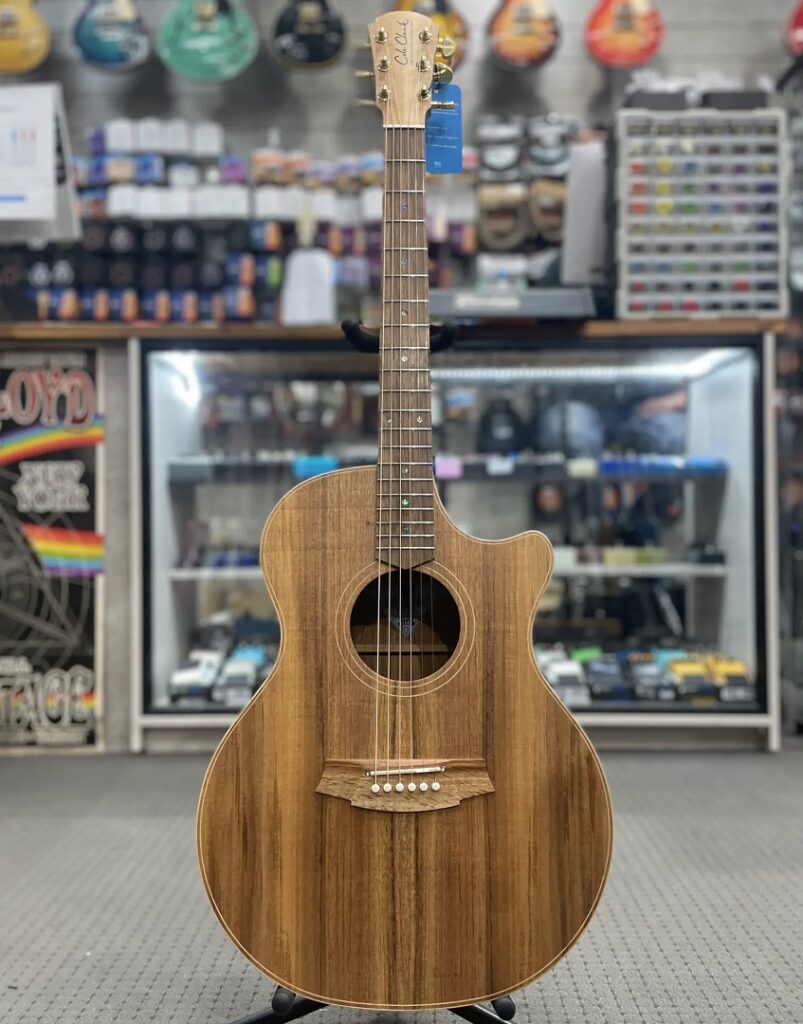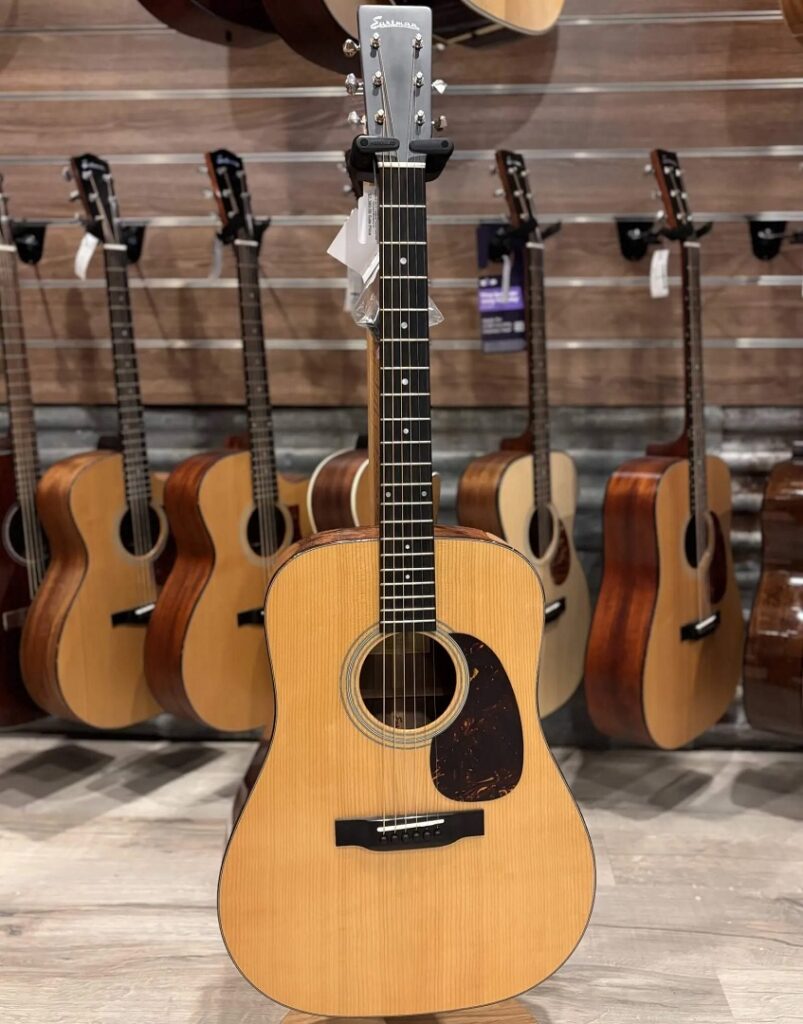
From Dreadnoughts to Jumbos: How Guitar Body Shapes Impact Tone
Not all acoustic guitars are created equal in terms of their body shape. This factor shapes the tone you hear and how comfortable the instrument feels in your hands. That’s why I always suggest starting your search by thinking about the kind of sound you want to achieve. Once you know what you’re listening for, you can narrow your options down to the shapes that typically deliver those characteristics. Of course, even models that look the same can sound worlds apart depending on who made them, so don’t just go by specs.
If you’re looking for a reputable acoustic guitar to buy, going with a well-known brand can make the process a lot easier. Established names like Yamaha, Ibanez, Fender, Gibson and Martin have built their reputations over decades for a reason. They consistently deliver quality instruments across a wide range of body shapes and tones. Whether you’re after something warm and mellow or bright and punchy, these brands usually have something that matches what you’re looking for. You’ll get peace of mind knowing you’re investing in craftsmanship you can trust.
Guitar Size

When it comes to how an acoustic guitar sounds, body size plays a much bigger role than many people realise. As the instrument gets larger, especially with a wider lower bout, you’ll often hear more powerful bass tones compared to the highs. That doesn’t necessarily mean the sound is off balance in a bad way. That added low-end warmth can be a huge plus, especially if you’re backing a singer with chord strumming. It gives the sound more depth and helps everything feel fuller and more grounded.
But not every musical style benefits from that richness. In older genres like Renaissance or Baroque music where pieces are more intricate and often involve multiple melodic lines at once, a lighter, more even tone is key. You want every note to carry its weight and not get overshadowed by booming bass. In those situations, a smaller, more balanced instrument helps the player bring out the music’s structure clearly and authentically. Ultimately, the way an instrument sounds depends on what you’re playing and how you want it to sound. Bigger isn’t always better, but sometimes that extra body is exactly what the music calls for.
The Importance of Body Shape
When you’re looking for an acoustic guitar to buy, one of the most important things to keep in mind is how each design influences the way it sounds and how it feels in your hands. Generally, smaller bodies tend to deliver a more focused, delicate tone, while larger ones offer deeper, fuller resonance. You’ll often see certain shape names repeated, like “Parlor,” “OO,” “Dreadnought,” and “Jumbo”, but the naming isn’t always consistent. Every builder seems to add a unique twist, sometimes even inventing new names for their designs, which can make comparisons a bit tricky.
Brands like Martin and Takamine tend to stick to more traditional labels. Others, like Everett or Collings, might go their own way, even if their instruments are based on classic shapes. The important thing is that these shapes give you a starting point when narrowing down what might suit your musical style and physical comfort. Just know that there’s no true standard, and one maker’s “Grand Auditorium” may sound quite different from another’s.
Different Guitar Body Shapes

The variety of acoustic guitars online can seem overwhelming, so it’s important to consider what to expect from your instrument to find the right fit for your playing style. Consider:
- Parlor: These are the smallest, super compact, and great if you like a softer, more intimate tone. They’re often favoured for fingerpicking thanks to their clear and focused sound.
- Concert (Model “O”): Slightly bigger than the parlor, these give you a touch more volume and warmth. They’re still quite responsive and good for delicate play.
- Grand Concert (Model “OO”): Inspired by classical guitars, this shape offers a balanced mid-range tone. It’s not the loudest, but it’s versatile and makes for a solid all-rounder—especially for those who don’t want too much bass or treble.
- Orchestra Model/Grand Auditorium (“OM” or “OOO”): These sit right in the middle, big enough to give you volume and presence, but still clear and articulate. They work well for solo players or anyone doing fingerstyle with a little more punch.
- Dreadnought: This one’s probably the most recognisable. If you’ve been to an acoustic gig, campfire party, or even just watched a singer-songwriter perform, chances are you’ve seen one. These have big bodies and big sound, with rich bass that works beautifully for flatpicking or strumming. They’re often a go-to for singer-songwriters.
- Jumbo/Super-Jumbo: These are built for bold projection and deep bass. They’re often seen in country settings or when you want a sound that can fill the room.
Bottom Line
So, what’s the best body shape for an acoustic guitar? Each of these shapes has its unique character, so don’t get too caught up in the names. What matters most is how it feels and how it sounds to you. If you’re into fingerpicking or want something light and comfortable, smaller bodies like the Parlor or Concert models are great. For a balanced sound with good projection, an Orchestra Model might suit you well. If you love bold volume and deep bass, especially for strumming or vocal accompaniment, a Dreadnought or Jumbo would feel ideal.


Sorry, the comment form is closed at this time.